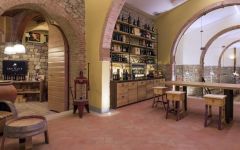San Felice Poggio Rosso Chianti Classico Gran Selezione 2017
-
James
Suckling -
Jeb
Dunnuck -
Robert
Parker -
Wine
Spectator



Product Details
Your Rating
Somm Note
Winemaker Notes
Intense ruby red. The nose releases scents of dried plum, blackberry, and raspberry. Velvety tannins and a judicious acidity on the palate. It is a wine of extraordinary longevity.
Perfect with grills and barbecues, wild game, and aged pecorino cheese.
Professional Ratings
-
James Suckling
Very floral with sweet berry and cherry character, as well as sage and lavender. Full-bodied with ultra-fine tannins and a long, fresh finish. Compact and beautiful. Racy finish. Already polished and tight, but give this a year or two to open. Drinkable now, but better after 2023.
-
Jeb Dunnuck
Composed entirely of Sangiovese, the 2017 Chianti Classico Gran Selezione Poggio Rosso was raised in 500-liter French oak barrels for 20 months before resting in bottle for an additional 15 months prior to release. It offers attractive aromas of pencil shavings woven with black raspberry coulis, candied roses, and licorice, and it has coiled tension through the palate, with medium to full body, ripe and firmly structured tannins, and driving acidity. Packed with redcurrant, dried earth, and cedar, its oak is present but feels well integrated.
-
Robert Parker's Wine Advocate
Packaged in a heavy glass bottle, the San Felice 2017 Chianti Classico Gran Selezione Poggio Rosso is a standout wine with a near or medium-term drinking window. Despite the heat of the vintage, this wine is unexpectedly tonic and tight from the start with lots of bold primary intensity contrasted against tobacco, cigar box and earthy spice. This full-bodied wine shows the best side of a challenging vintage, and although there is a hint of openness or oxidation, it drinks very nicely right now. Fruit is sourced from across a 2.5-hectare plot along the forest line that was planted primarily to Sangiovese in the 1970s. Don't wait long with this bottle. Best After 2022
-
Wine Spectator
This is broad, evoking leather, iron, sanguine, plum and cherry flavors. Open-knit and amply structured, revealing equilibrium and length. The aftertaste persists with a spicy finish. Best from 2023 through 2032.
Other Vintages
2016-
Wine
Spectator -
Wine
Enthusiast








Agricola San Felice is steeped in local lore and history. Named after a local early Christian Saint from the 18th century, the property was bought by the Grisaldi Del Taja family – the founding members of the Chianti Classico consortium. The family produced wine for several centuries until 1968 when the estate passed to Enzo Morganti. Prior to assuming control, Enzo Morganti spent two decades researching and experimenting with Sangiovese clones at Tenuta di Lilliano. At San Felice, he restructured and transformed this venerable estate, concentrating on high quality winemaking, systematic scientific research and thoughtful vineyard purchases, which included the Campogiovanni vineyard in Montalcino in 1984. Today the property includes a 1,853 acre resort, 445 acres of vineyards and a 44 acre parcel dedicated to experimental viticulture and genetic improvement of Sangiovese,
The San Felice vineyards are situated amongst the gently rolling hills of the Castelnuovo Berardenga area of Chianti Classico. The vines are planted in two different soil types: calcareous clay and a combination of sand and lime. The terroir of Campogiovanni, including its sandy, mineral-rich argillous soil, allows Sangiovese vines to grow slowly and steadily, therefore producing unusually complete and balanced grapes. In addition to indigenous varietals like Toscana's classic Sangiovese, San Felice has plantings of international varieties such as Cabernet Sauvignon, Chardonnay and Sauvignon Blanc. Like Enzo, winemaker Leonardo Bellacini has spent much of his career working with Sangiovese carries on the legacy of tradition and research and experimentation.

Among Italy's elite red grape varieties, Sangiovese has the perfect intersection of bright red fruit and savory earthiness and is responsible for the best red wines of Tuscany. While it is best known as the chief component of Chianti, it is also the main grape in Vino Nobile di Montepulciano and reaches the height of its power and intensity in the complex, long-lived Brunello di Montalcino. Somm Secret—Sangiovese doubles under the alias, Nielluccio, on the French island of Corsica where it produces distinctly floral and refreshing reds and rosés.

One of the first wine regions anywhere to be officially recognized and delimited, Chianti Classico is today what was originally defined simply as Chianti. Already identified by the early 18th century as a superior zone, the official name of Chianti was proclaimed upon the area surrounding the townships of Castellina, Radda and Gaiole, just north of Siena, by Cosimo III, Grand Duke of Tuscany in an official decree in 1716.
However, by the 1930s the Italian government had appended this historic zone with additonal land in order to capitalize on the Chianti name. It wasn’t until 1996 that Chianti Classico became autonomous once again when the government granted a separate DOCG (Denominazione di Origine Controllata e Garantita) to its borders. Ever since, Chianti Classico considers itself no longer a subzone of Chianti.
Many Classicos are today made of 100% Sangiovese but can include up to 20% of other approved varieties grown within the Classico borders. The best Classicos will have a bright acidity, supple tannins and be full-bodied with plenty of ripe fruit (plums, black cherry, blackberry). Also common among the best Classicos are expressive notes of cedar, dried herbs, fennel, balsamic or tobacco.
